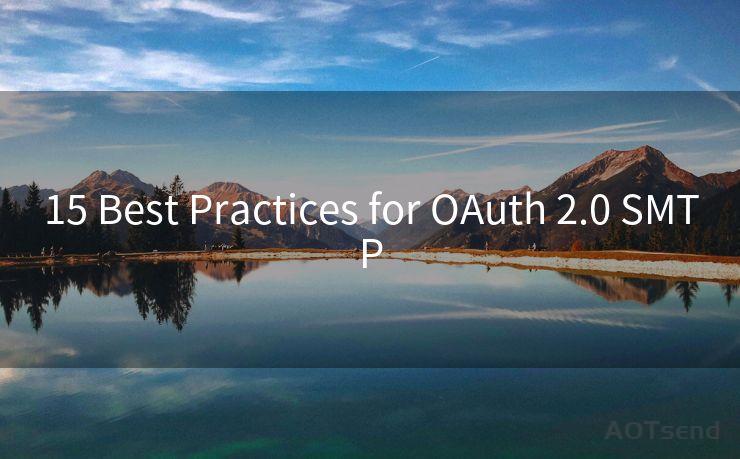15 Best Practices for OAuth 2.0 SMTP




In the digital age, secure communication is paramount, especially when it comes to email exchanges. OAuth 2.0, an authorization framework, plays a crucial role in ensuring secure access to protected resources. When combined with SMTP (Simple Mail Transfer Protocol), it can revolutionize email security. Here are 15 best practices to help you leverage OAuth 2.0 for SMTP securely.
1. Understanding OAuth 2.0 and SMTP
Before diving into the best practices, it's essential to understand OAuth 2.0 and SMTP. OAuth 2.0 is an authorization protocol that allows third-party applications to access user data without using the user's credentials. SMTP, on the other hand, is a protocol for sending emails. By integrating OAuth 2.0 with SMTP, you can ensure secure email delivery.
2. Implementing Authorization Code Grant
One of the most commonly used OAuth 2.0 grants is the authorization code grant. This grant type is suitable for web applications and provides a secure way to authenticate users and authorize access to their email accounts.
3. Utilizing Access Tokens
Access tokens are the key to secure communication using OAuth 2.0. These tokens allow authorized access to protected resources, such as email accounts. Always ensure that access tokens are securely stored and transmitted.
4. Managing Token Expiration
Access tokens have an expiration date to enhance security. It's crucial to handle token expiration gracefully and request new tokens when necessary.
5. Protecting Client Secrets
Client secrets are essential for authenticating your application with the authorization server. Keep these secrets secure and never expose them in public repositories or unsecure environments.
6. Employing HTTPS for Communication
Always use HTTPS for communication between your application, the authorization server, and the resource server. This ensures that all data, including access tokens, is transmitted securely.
🔔🔔🔔
【AOTsend Email API】:AOTsend is a Managed Email Service for sending transactional emails. Support Email Types: reminders, authentication, confirmations, notifications, verification codes, invoices, password resets, account activations, billing statements, two-factor authentication (2FA), and one-time passwords (OTP) emails, etc. $0.28 per 1000 Emails. 99% Delivery, 98% Inbox Rate.
You might be interested in:
Why did we start the AOTsend project, Brand Story?
What is a Managed Email API, How it Works?
Best 25+ Email Marketing Platforms (Authority,Keywords&Traffic Comparison)
Best 24+ Email Marketing Service (Price, Pros&Cons Comparison)
Email APIs vs SMTP: How they Works, Any Difference?
7. Validating Access Tokens
Before granting access to protected resources, always validate access tokens. This ensures that only authorized requests are processed.

8. Handling Errors and Exceptions
Implement robust error handling mechanisms to manage exceptions gracefully. This helps in identifying and resolving issues promptly.
9. Monitoring and Logging
Regularly monitor and log OAuth 2.0-related activities. This aids in detecting suspicious activities and potential security breaches.
10. Implementing Scopes
Scopes define the level of access an application has to a user's data. Always request the minimum necessary scopes to reduce the risk of unauthorized access.
11. Updating Libraries and Dependencies
Keep your OAuth 2.0 libraries and dependencies up to date. This ensures you have the latest security patches and improvements.
12. Avoiding Cross-Site Request Forgery (CSRF)
Implement measures to prevent CSRF attacks, which can compromise the security of OAuth 2.0 implementations.
13. Educating Users on Security
Educate users on the importance of keeping their credentials secure and the risks associated with authorizing third-party applications.
14. Regular Security Audits
Conduct regular security audits to identify and address any vulnerabilities in your OAuth 2.0 implementation.
15. Preparing for Emergencies
Have a contingency plan in place to handle security breaches and other emergencies related to OAuth 2.0 and SMTP communications.
By following these best practices, you can significantly enhance the security of your email communications using OAuth 2.0 and SMTP. Remember, security is an ongoing process, and staying vigilant is key to protecting your data and your users' privacy.




Scan the QR code to access on your mobile device.
Copyright notice: This article is published by AotSend. Reproduction requires attribution.
Article Link:https://www.mailwot.com/p3789.html



